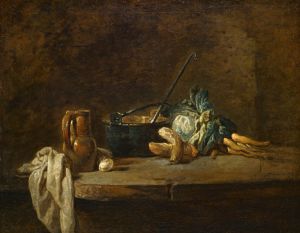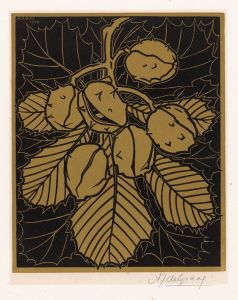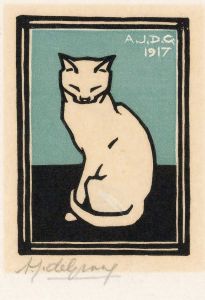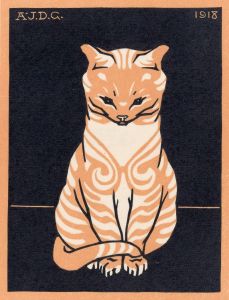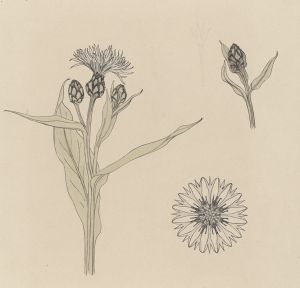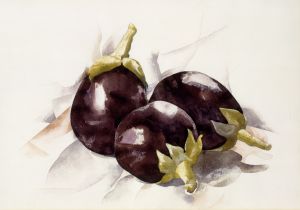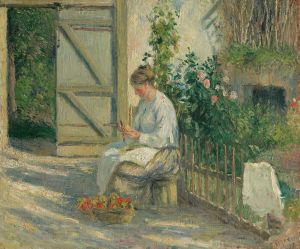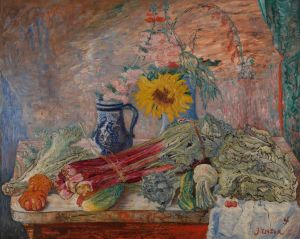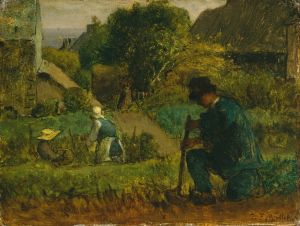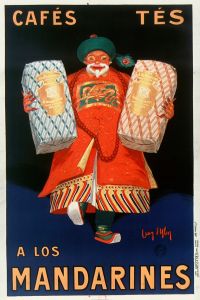
Kale boom
A hand-painted replica of Julie de Graag’s masterpiece Kale boom, meticulously crafted by professional artists to capture the true essence of the original. Each piece is created with museum-quality canvas and rare mineral pigments, carefully painted by experienced artists with delicate brushstrokes and rich, layered colors to perfectly recreate the texture of the original artwork. Unlike machine-printed reproductions, this hand-painted version brings the painting to life, infused with the artist’s emotions and skill in every stroke. Whether for personal collection or home decoration, it instantly elevates the artistic atmosphere of any space.
Julie de Graag (1877–1924) was a Dutch artist known for her graphic works, particularly woodcuts and linocuts, which often depicted natural subjects with a distinctive style. One of her notable works is "Kale boom," which translates to "Bare Tree" in English. This piece exemplifies her skill in capturing the essence of nature through minimalistic yet expressive forms.
"Kale boom" is a woodcut that reflects de Graag's interest in the natural world and her ability to convey emotion and atmosphere through simple lines and shapes. The artwork features a solitary tree, stripped of its leaves, standing starkly against the background. The composition is characterized by its clean lines and the contrast between the dark silhouette of the tree and the lighter background, a technique that highlights the tree's intricate structure and form.
Julie de Graag was associated with the Dutch Art Nouveau movement, which emphasized decorative arts and was part of a broader European trend that sought to break away from traditional academic art. Her work is often noted for its clarity and precision, qualities that are evident in "Kale boom." The piece demonstrates her ability to distill the essence of her subject matter into a form that is both aesthetically pleasing and thought-provoking.
De Graag's choice of subject matter in "Kale boom" may reflect her personal affinity for nature and her interest in exploring themes of solitude and resilience. The bare tree can be seen as a symbol of endurance, standing alone yet strong, which may resonate with viewers on a metaphorical level. This ability to imbue her work with deeper meaning while maintaining a straightforward visual approach is a hallmark of de Graag's artistic style.
Throughout her career, Julie de Graag produced a variety of works that included not only woodcuts but also drawings and paintings. However, it is her graphic work that has garnered the most attention and appreciation. Her contributions to the field of printmaking have been recognized for their technical skill and artistic vision.
Despite her relatively short life, de Graag left a lasting impact on the art world, particularly in the realm of printmaking. Her works continue to be studied and admired for their unique blend of simplicity and depth. "Kale boom" remains a testament to her talent and her ability to capture the beauty and complexity of the natural world in a way that is both accessible and profound.
In summary, "Kale boom" by Julie de Graag is a significant work that exemplifies her mastery of woodcut techniques and her ability to convey powerful themes through minimalist design. The piece stands as a representation of her broader artistic contributions and her enduring legacy in the world of graphic arts.





